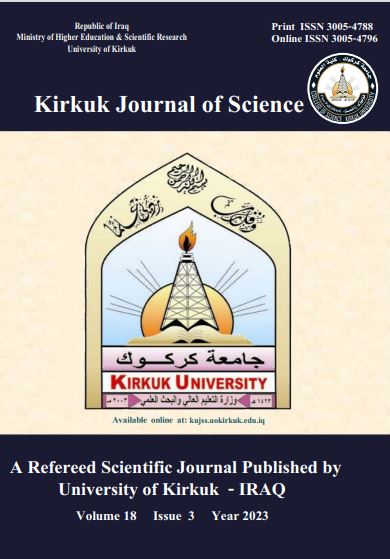Abstract
The buried underground or underwater metallic parts suffer from the chemical or
hydrochemical corrosion effect.In this paper the later effect will be studied that is
caused by the current generated between the metal parts ( the positive pole ) and the
ground( the negative pole)through water or the wet soil.The flowing current will change
the iron molecules in to positive ions which react with oh ions and cause the rust
(ferric hydroxide)of chemical symbol Fe(OH)
3
.By the supply of an external DC the
generated current will stop from flowing between the metal and ground since the
positive pole will be neutralized and then become negative.For designing the cathodic
protection it is necessary to measure the created currents and voltage causing corrosion
according to the soil environment condition therefore the soil test is the main factor for
the design purposes.This work will help in knowing the size of the station generating
current and voltage that is locally required directly at the site after taking the
measurements by the suggested designed instruments in the paper for this purpose, as
shown in the data taken practically.
hydrochemical corrosion effect.In this paper the later effect will be studied that is
caused by the current generated between the metal parts ( the positive pole ) and the
ground( the negative pole)through water or the wet soil.The flowing current will change
the iron molecules in to positive ions which react with oh ions and cause the rust
(ferric hydroxide)of chemical symbol Fe(OH)
3
.By the supply of an external DC the
generated current will stop from flowing between the metal and ground since the
positive pole will be neutralized and then become negative.For designing the cathodic
protection it is necessary to measure the created currents and voltage causing corrosion
according to the soil environment condition therefore the soil test is the main factor for
the design purposes.This work will help in knowing the size of the station generating
current and voltage that is locally required directly at the site after taking the
measurements by the suggested designed instruments in the paper for this purpose, as
shown in the data taken practically.
Abstract
تعانی الأجزاء المعدنیة المدفونة فی الماء أو تحت الأرض من ظاهرة التآکل الکیمیائی أوالکهروکیمیائی وسنتناول النوع الأخیر وسببه التیار المتولد بین المعدن الموجب والأرض السالبة خلال الماء أوالتربة بینهما ویسبب التیار تحوّل ذرات الحدید إلى ایونات الحدید الموجبة والتی تتحد مع ایوناتOH والتی تسبب الصدأ ferric hydroxide والرمز الکیمیائی Fe(OH)3 والمسمى أیضا بـ rust.یلخص مبدأ الحمایة الکاثودیة بالتیار المسلط لمکافحة التآکل على المنشآت الحدیدیة المدفونة فی التربة أوالمغمورة فی الماء حیث یستخدم مصدر کهربائی ذوتیار مستمر یربط قطبه السالب بالأنبوب وقطبه الموجب یربط بحوض أرضی مدفون بالتربة حیث یتفرغ تیار من المصدرالکهربائی إلى الأرض ویسری من خلاله على هیئة نصف کرة إلى خط الأنابیب فیجعل منه کاثوداً نسبة للتربة من حوله وعلیه یقع التآکل على الحوض الأرضی ویبقى الأنبوب سلیماً والتیار یکمل دورته من خلال جدار الأنبوب عائداً إلى مصدر ه.لغرض تصمیم الحمایة الکاثودیة لابد من قیاس التیارات والفولتیات الناشئة والمسببة للتآکل وحسب الظروف البیئیة للتربة وان فحص التربة هو العامل الأساس فی التصمیم.سیساعد البحث على معرفة سعة المحطة اللازمة من تیار وفولتیة موقعیاً وذلک بعد إجراء القیاسات بموجب الأجهزة المصممة لهذا الغرض وتضمن البحث قیم حقیقیة لأنها أجریت موقعیاً.
Keywords
استخدام التیار
التیار الفولتیة
الحمایة الکاثودیة
المسلط
تصمیم
مقیاس
